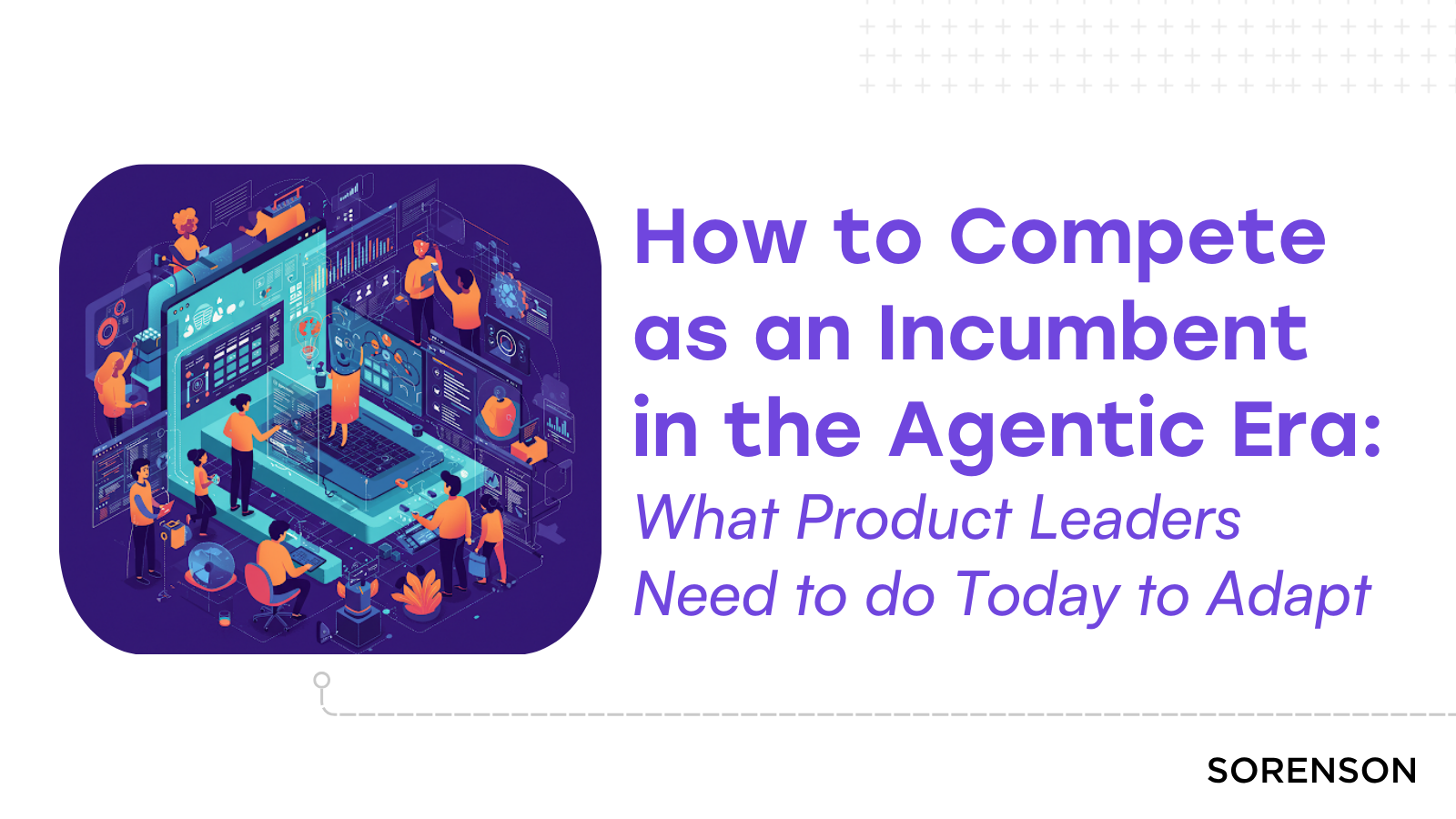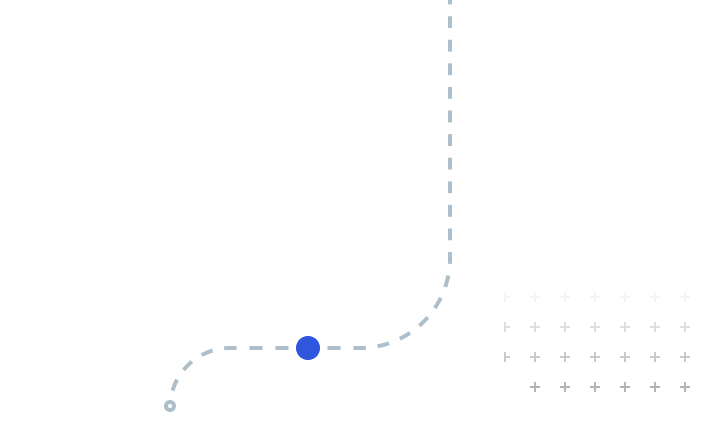
The rise of agentic technology has created the need for a product management process reset in SaaS. Just about everything that used to be true about how product leaders should approach competition, differentiation, and meeting customer expectations is changing.
The pressure product leaders face from agentic technology is significant, yet very recent: much of the startup infrastructure around agents has cropped up in the past 18 months, with some companies reaching meaningful scale in that very short period. Some early agent-native companies have seen incredible growth, but now the race is on for all software companies — especially those created pre-ChatGPT — to adapt.
In response to this dramatic shift, I’ve been hearing more and more questions like:
- How do I deal with the litany of upstarts crowding the market with agentic technology?
- How do I maintain differentiation when my competitors are adding new features at breakneck speed?
- How do I justify ROI when my customers are scrutinizing software spend more than ever?
Customers today want to accomplish the same tasks as before — but more quickly than ever. This means the strategy of optimizing for process digitization and launching new features at hypersonic speed is no longer enough. Now, you need to optimize for customer ROI and prioritize automation. The goal in 2025 is to decrease, rather than increase, the time your customers spend inside your software.
Said another way, if your competitor tells your target customers “you no longer have to touch five of the seven steps in this workflow because our agent will do it for you,” and the product works as advertised, that competitor will win.
What this shift might look like inside a company:
- A CFO no longer needs accounts receivable and accounts payable teams to follow up on outstanding items several times a week. Now, they have an AI agent that facilitates the collection process
- A customer support team uses an AI agent to learn context from internal systems and help customers with faster, more accurate responses
- A go-to-market team utilizes agentic SDRs to communicate with leads, streamline qualification, set up demos, and resolve concerns prior to human engagement
Why Product Leaders Are Struggling to Adapt
Typically, leaders are fully aware their product needs to change, but they struggle with how to balance adapting the product management process and dealing with the pressures of an existing software feature set. Which begs the question: can product managers address the realities of technology shifts while not dropping the ball on current customers?
Before we unpack the right approach, here’s the good news: There’s no reason why incumbents can’t compete in the agentic era if they adapt quickly. But, it’s going to take a dramatic change to the way these companies think about managing their product, creating value, and driving ROI. The core mindset product leaders need to have is a shift from “How do I make my technology report things?” to “How do I make my technology do things?”.
If you want to build an enduring business that survives the agentic era, your product management function must evolve. Here are the steps I’d recommend to any product leader who’s struggling with how to adapt:
Six Steps to Compete in the Agentic Era
Step 1: Reframe the Problems Your Customers are Facing
You need to shift from a feature-focused mindset to a problem-focused one. This means making time to reflect on a set of key questions designed to help you understand your customers’ workflows holistically and see how agentic technology could change their experience for the better. Questions like:
- What did my customers do before adopting software?
- Why did they adopt my software in the first place?
- How well does my software solve their problem today?
- What problems does my software create for my customers?
Step 2: Pretend You’re Starting From Scratch
I know it isn’t easy, but it’s crucial to temporarily set aside your existing product and reimagine what it should look like today to best solve your customers’ problems. Over time, being deeply focused on a particular framework for problem-solving creates blindspots, inhibiting product managers from recognizing new opportunities. A fresh perspective is often the simple advantage of upstart competitors. Here’s what I’d recommend doing:
- Re-anchor yourself to the core problem your company initially solved. How has it evolved since then?
- Considering today’s technological capabilities, imagine what the ideal solution would look like in 2025
- Think about how technology will continue to evolve to meet more of your customers’ needs in the future. Based on this, what does your solution need to look like by 2026 or 2027?
The aim of this exercise is to break free from incremental thinking and embrace what’s possible not just today, but what will be possible in 1, 2, or even 3 years into the future — instead of focusing on the technology of yesterday.
Step 3: Get Clear on What’s Technically Possible
Many companies are still operating within the constraints of their 2021 developer toolkit. After you’ve done the exercise above, sit down with your development team and get a solid understanding of what’s technically possible. Remember that code-writing has shifted dramatically in the last two years. I recommend asking questions like:
- How much of what the customer does in the software today could be automated with the right context and training?
- What enabling technical advances have been introduced in the last six months that change the way you think about the tech stack?
- How could new technology save our customers time, money, and seats?
Step 4: Plan Your Path to a Successful Transition
Your first asset in planning a successful transition is realizing that you likely have a strong customer base that appreciates many features about your existing products. The second is coming to terms with further automation that can be built without dramatic changes to existing products. Prioritize the development of features that automate what the customer doesn’t want to spend time doing, as well as features that provide insights and intelligence that the customer is craving. Here are a few specifics:
- Determine the biggest inefficiencies of the software, the customer’s use of the software, and how well the software accomplishes the desired solution of the original problem
- Strategize how automation could fix identified inefficiencies
- Find out what the customer wants to know on an ongoing basis about the problem and their progress toward achieving the solution
- Create a phased product plan to achieve ascending degrees of automation and insights/intelligence that drive substantial ROI for the customer
Helpful tip: So much of the promise of agentic solutions is tethered to the fear of inaccuracy or malfunction of those same agents. Hence, providing automation with a complementary increase in insights and intelligence on accuracy, function, or outcomes is an excellent recipe for customer satisfaction and ROI.
Step 5: Test and Iterate Constantly
(Though this is step 5, it should be an ongoing effort to foster internal insights)
Confirm (or adjust) your hypotheses with your customers, non-customers, and customers of your competitors. I recommend committing to at least 50 conversations in a 90-day timeframe to dial in your product strategy, understand ROI, and get a sense of the most common customer response. Then, revisit your assumptions with your customer advisory board over time. Ask questions like:
- My assumption is your core problem is X, and the ideal solution is Y. Is that correct? What did I get wrong?
- If I could provide this type of solution to you, what would it be worth? How would you go about assessing the ROI of a solution like this?
- My goal is to solve your core problem(s) for the next 10 years. Here’s my game plan — what’s missing from it?
Step 6: Own the Math
It is very common to take a well-formed product concept to a set of customers or potential customers and receive a positive response. And, at that point, it’s very tempting to run full-steam ahead based on those anecdotes. However, there is a critical final step that should not be missed: you have to understand the math of the product plan being proposed. The equation is the relationship between the resources required and the return on investment in the form of increased ARR, which is foundational to good product strategy. Below are a few questions to consider to get there:
- What will it take to build this future state in dollars and time?
- What will the impact be on renewals?
- What will the impact be on new customer adoption?
- What’s the appropriate value-based pricing strategy and how should the feature set be packaged to provide for module-based upsell in the future?
- In addition to being seen as an innovator, what other benefits does my company stand to gain from building the contemplated product plan?
- How will my competitors respond and how do I stay ahead once I’ve begun implementation of the product strategy?
To Sum Up
Challenges and change bring both opportunities and threats; but, when you consistently execute week-in and week-out, that opportunity can become a realized success. For established SaaS companies competing in the agentic era, you have a tremendous advantage: happy customers. Take the time now to change your product management mentality and process, and agentic software will become an opportunity rather than a threat.
It’s a revolutionary transition, but also a worthwhile one. If you’re a product leader navigating this transition right now, reach out to the Sorenson Capital team with any questions and let us know what else we can share to help you navigate the agentic era.




